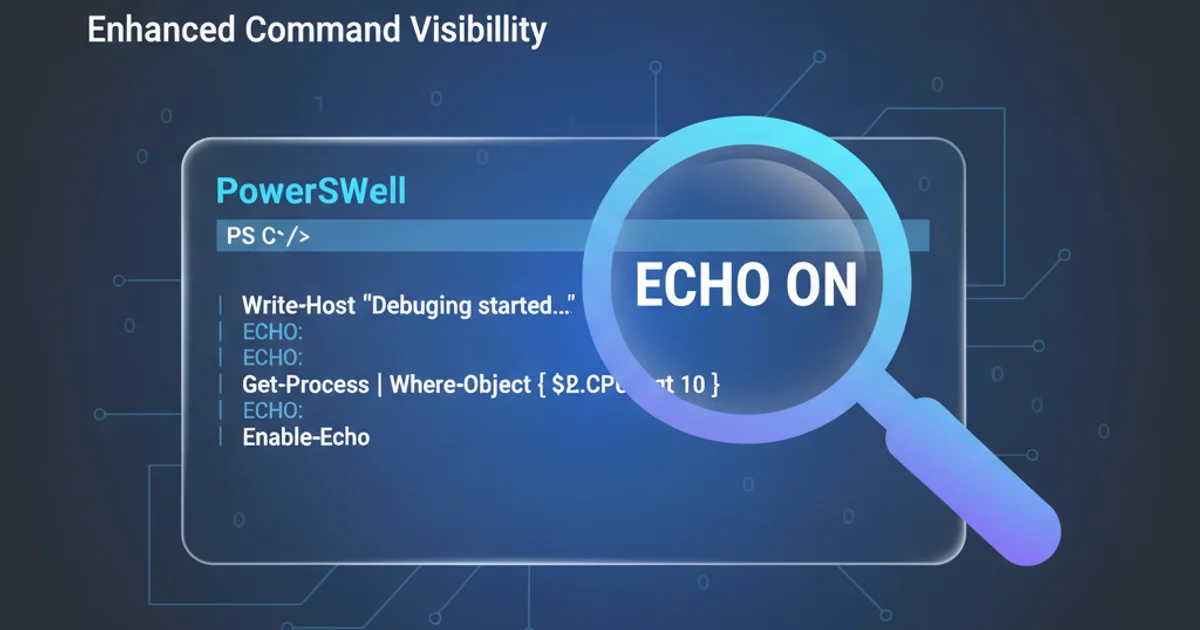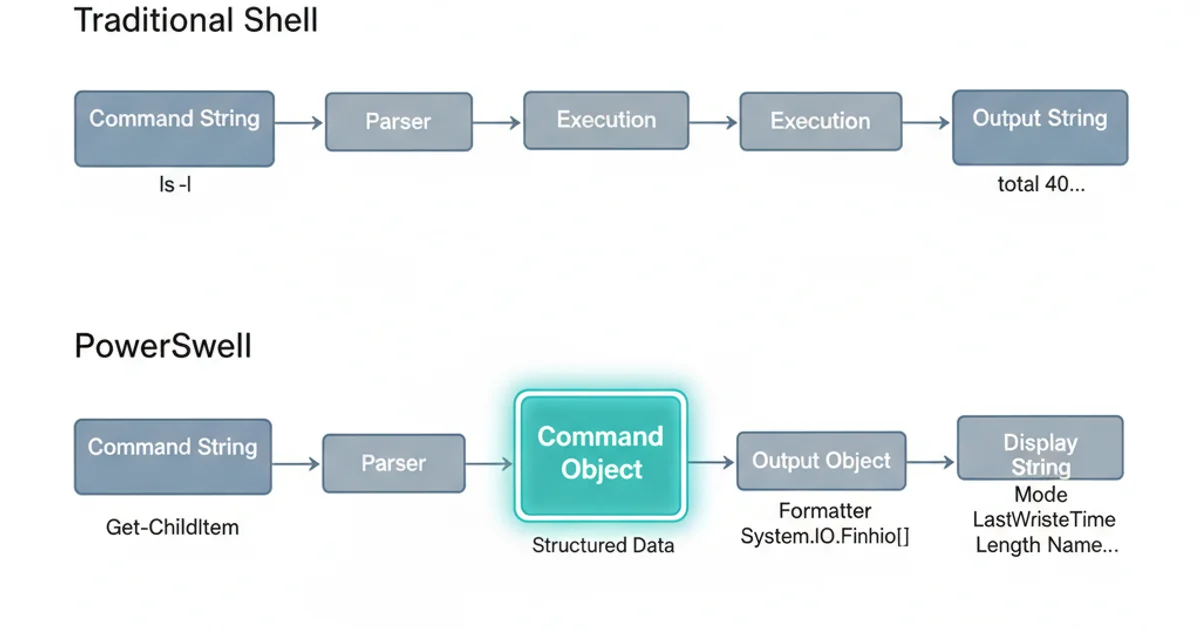PowerShell "echo on"
Categories:
Understanding and Emulating 'echo on' in PowerShell for Debugging

Explore how PowerShell handles command echoing, its differences from traditional shells, and effective techniques for debugging scripts by displaying executed commands.
In traditional command-line environments like cmd.exe or Unix-like shells, the echo on command is commonly used to display each command as it's executed within a script or batch file. This feature is invaluable for debugging, allowing developers to trace the flow of execution and identify where issues might arise. However, PowerShell, with its object-oriented nature and different execution model, does not have a direct equivalent to a global echo on command. This article will delve into why PowerShell behaves differently and provide practical methods to achieve similar debugging visibility.
Why PowerShell Lacks a Direct 'echo on'
PowerShell's design philosophy differs significantly from older shells. Instead of simply executing text commands, PowerShell works with objects. When you type a command, PowerShell parses it, converts it into an object, and then executes it. The output is also an object. This object-oriented pipeline means that the raw command string isn't always explicitly 'echoed' back to the console in the same way a batch file might. By default, PowerShell focuses on displaying the results of commands, not necessarily the commands themselves as they are processed.

Conceptual difference between traditional shell and PowerShell execution
Achieving Command Echoing for Debugging
While there's no single echo on switch, PowerShell offers several robust mechanisms to gain visibility into script execution. These methods range from simple output commands to advanced debugging features, providing flexibility depending on the complexity of your script and the level of detail required.
Write-Host or Write-Verbose commands are often sufficient. For more complex scenarios, leverage PowerShell's built-in debugger.Method 1: Manual Output with Write-Host or Write-Verbose
The most straightforward way to 'echo' commands is to explicitly write them to the console before their execution. Write-Host prints directly to the host console, bypassing the pipeline, while Write-Verbose is designed for detailed, optional output that can be controlled by the -Verbose common parameter.
# Using Write-Host
Write-Host "Executing: Get-Service -Name BITS"
Get-Service -Name BITS
# Using Write-Verbose (requires -Verbose switch when running script)
Write-Verbose "Executing: Get-Process -Name explorer" -Verbose
Get-Process -Name explorer
Method 2: Using the Trace-Command Cmdlet
Trace-Command is a powerful cmdlet designed specifically for tracing the execution of PowerShell components, including cmdlets, providers, and expressions. It can provide very detailed information about how commands are processed, including parameter binding, pipeline processing, and more. While not a direct 'echo on' for every line, it offers deep insight into specific command executions.
# Trace the execution of Get-Process
Trace-Command -Name CommandDiscovery, ParameterBinding -Expression { Get-Process -Name explorer } -PSHost
# Trace a script block
Trace-Command -Name CommandDiscovery -Expression {
$services = Get-Service
$runningServices = $services | Where-Object { $_.Status -eq 'Running' }
$runningServices.Count
} -PSHost
Method 3: Leveraging the PowerShell Debugger
PowerShell includes a robust debugger that allows you to step through scripts, set breakpoints, and inspect variables. While not 'echoing' commands in the traditional sense, stepping through a script provides the ultimate visibility into execution flow. You can use Set-PSBreakpoint or integrated development environments (IDEs) like Visual Studio Code to manage breakpoints.
# Example script: MyScript.ps1
# Set-PSBreakpoint -Path 'MyScript.ps1' -Line 3
function Get-MyProcess {
param([string]$Name)
Write-Host "Searching for process: $Name"
Get-Process -Name $Name -ErrorAction SilentlyContinue
}
$procName = "notepad"
Write-Host "Calling Get-MyProcess with '$procName'"
Get-MyProcess -Name $procName
# To debug, run: psedit MyScript.ps1 (in VS Code) or Set-PSBreakpoint -Path 'MyScript.ps1' -Line 3; .\[MyScript.ps1]
Method 4: Script-Level Logging and Transcription
For a comprehensive record of script execution, including commands and their output, PowerShell's transcription feature is highly effective. Start-Transcript captures all input and output from a PowerShell session to a text file, providing a detailed log that can be reviewed later.
# Start transcription to a log file
Start-Transcript -Path "C:\temp\MyScriptLog.txt" -Append
# Your script commands here
Write-Host "Starting script execution..."
Get-Date
Get-Service -Name BITS
Get-Process -Name explorer
# Stop transcription
Stop-Transcript
Write-Host "Script execution logged to C:\temp\MyScriptLog.txt"
Start-Transcript in production environments, as it can generate large log files and may expose sensitive information if not properly managed.